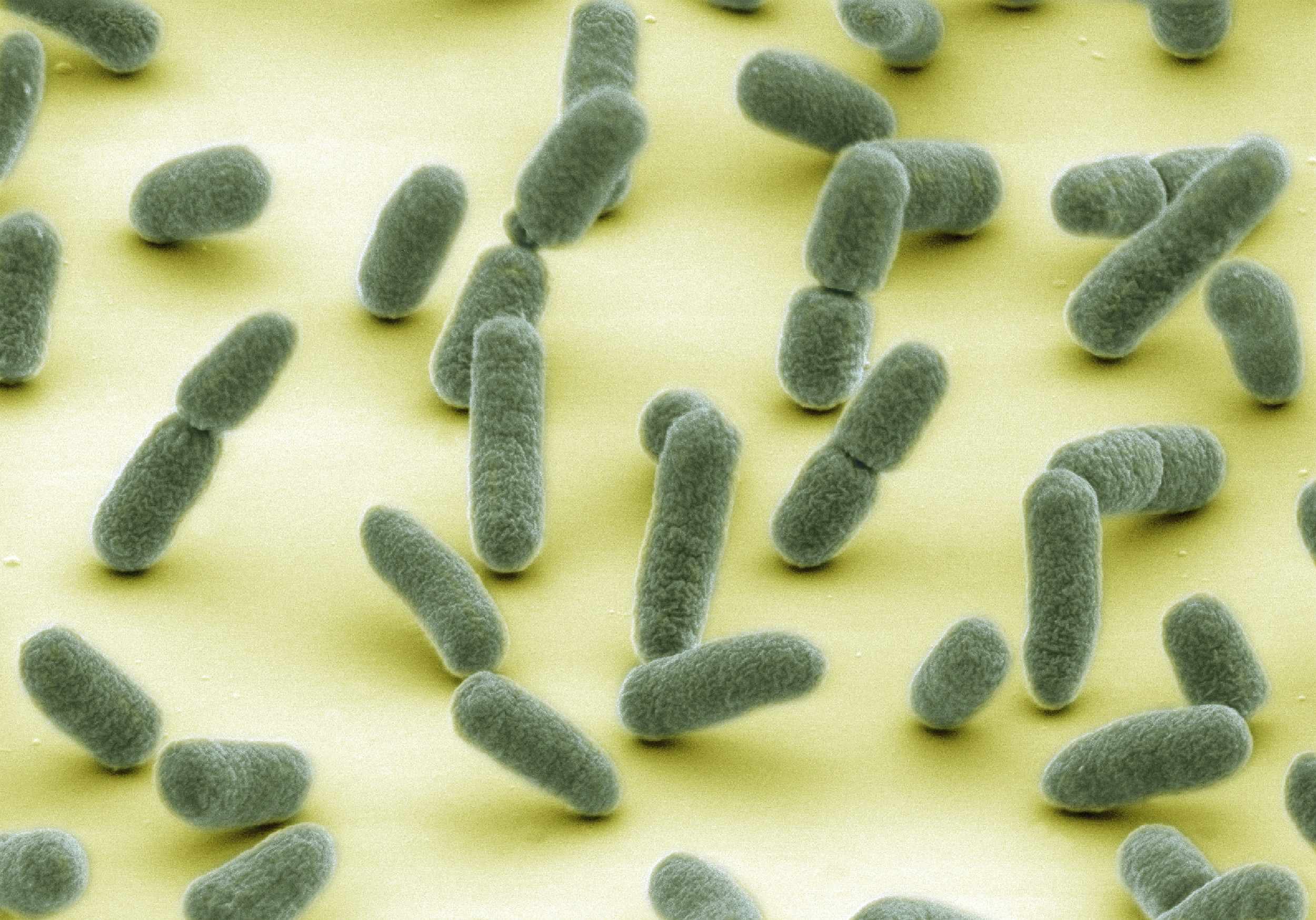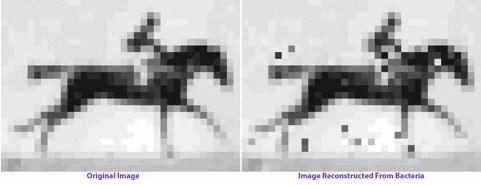
Tech & Sci
22:59, 17-Jul-2017
Scientists store a GIF in a living cell's DNA

There are so many options available if you have data to save, like a hard disk, USB disk or DVD. But scientists have now found a new and very fancy storage option – in the DNA of bacteria.
In a study published in the journal Nature, researchers from Harvard University have successfully encoded a short video into the DNA of living E. coli bacteria. They defined a DNA code for each pixel of a black-and-white movie and used the CRISPR genome-editing tool to "upload" data onto DNA, turning the bacteria into a storage disk.

E. coli bacteria, pictured via a scanning electron microscope. /VCG Photo
E. coli bacteria, pictured via a scanning electron microscope. /VCG Photo
"We designed strategies that essentially translate the digital information contained in each pixel of an image or frame as well as the frame number into a DNA code, that, with additional sequences, is incorporated into spacers," said Seth Shipman, lead study author according to the university's website.
“We then provided spacer collections for consecutive frames chronologically to a population of bacteria which, using Cas1/Cas2 activity, added them to the CRISPR arrays in their genomes," Shipman said, adding that after retrieving all arrays from the bacterial population by DNA sequencing, they were finally able to reconstruct all frames of the movie and the order they appeared in.

The original image (L) of the short movie and the image reconstructed from bacteria. /iflscience.com
The original image (L) of the short movie and the image reconstructed from bacteria. /iflscience.com
This five-frame film, made by the English photographer Eadweard Muybridge in 1878 and showing a galloping horse with a rider, can not only be "downloaded" and replayed at any time, but also reproduced with cell proliferation.
The advance of this study lies in that it managed to archive data in living rather than synthetic DNA.
In their future work, the scientists will study how to establish molecular recording devices in other cell types and create a system to memorize biological information.

SITEMAP
Copyright © 2018 CGTN. Beijing ICP prepared NO.16065310-3
Copyright © 2018 CGTN. Beijing ICP prepared NO.16065310-3